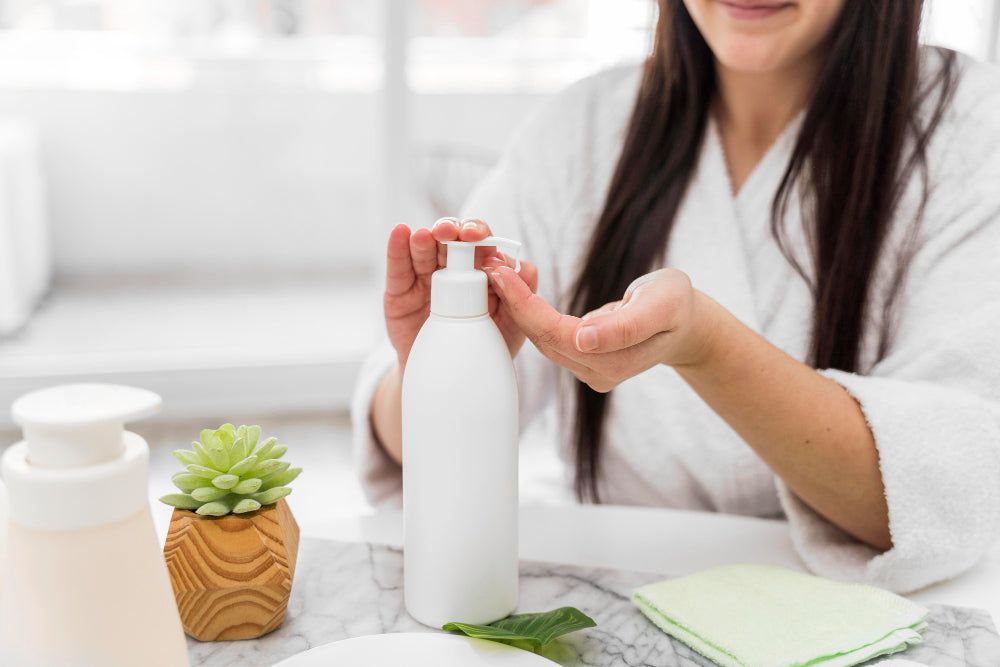Finding the perfect body lotion can feel overwhelming—especially when you’re committed to organic, clean ingredients. The wrong formula leaves skin greasy, dry, or irritated. The right one? It hydrates deeply, balances your skin, and feels like a daily treat.
This step-by-step guide helps you match certified organic body lotions to your exact skin type—whether you’re dry, oily, sensitive, combination, or mature. No guesswork. Just glowing, healthy skin.
Step 1: Know Your Skin Type
Before shopping, identify your skin’s needs:
| Skin Type | Key Signs | Common Concerns |
|---|---|---|
| Dry | Tight, flaky, rough patches | Dehydration, cracking |
| Oily | Shiny, enlarged pores, greasy feel | Clogged pores, acne |
| Combination | Oily T-zone, dry cheeks | Imbalanced hydration |
| Sensitive | Redness, itching, reacts easily | Irritation, burning |
| Mature | Fine lines, loss of firmness | Thinning barrier, dullness |
Pro tip: Test in the morning. If your skin feels tight 2 hours after cleansing, it’s dry. If it’s shiny by noon, it’s oily.
Step 2: Understand Organic Lotion Labels
Not all “natural” lotions are equal. Look for:
- USDA Organic, ECOCERT, or COSMOS seals
- 70–100% organic ingredients (check the fine print)
- No parabens, sulfates, synthetic fragrance, mineral oil, or silicones
Fragrance-free is best for sensitive skin—even “natural” essential oils can irritate.
Step 3: Match Ingredients to Your Skin Type
For Dry Skin – Rich, Occlusive Moisture
Goal: Lock in hydration, repair the barrier.
| Best Organic Ingredients | Why They Work |
|---|---|
| Shea butter | Emollient; seals in moisture |
| Murumuru butter | Lightweight yet deeply nourishing |
| Coconut oil (virgin, cold-pressed) | Restores lipids |
| Avocado oil | High in fatty acids |
| Hyaluronic acid (plant-derived) | Holds 1000x its weight in water |
Texture: Thick cream or balm Avoid: Lightweight gels (evaporate too fast)
For Oily Skin – Lightweight, Non-Comedogenic Hydration
Goal: Hydrate without clogging pores.
| Best Organic Ingredients | Why They Work |
|---|---|
| Aloe vera | Soothes, hydrates lightly |
| Jojoba oil | Mimics skin’s sebum, balances oil |
| Grapeseed oil | Antioxidant-rich, mattifying |
| Witch hazel (alcohol-free) | Controls shine |
| Niacinamide (from plants) | Regulates oil production |
Texture: Gel-lotion or fluid emulsion Avoid: Heavy butters, coconut oil (can clog)
For Combination Skin – Balanced, Zoned Hydration
Goal: Moisturize dry areas, control oil in T-zone.
| Best Organic Ingredients | Why They Work |
|---|---|
| Rosehip oil | Lightweight, regenerative |
| Squalane (from olives) | Non-greasy, mimics skin lipids |
| Green tea extract | Calms oiliness |
| Calendula | Soothes dry patches |
Texture: Medium-weight lotion Tip: Use a richer cream on dry zones, lighter gel on oily areas.
For Sensitive Skin – Soothing, Hypoallergenic Care
Goal: Calm inflammation, avoid triggers.
| Best Organic Ingredients | Why They Work |
|---|---|
| Calendula extract | Anti-inflammatory, healing |
| Oat kernel | Soothes redness |
| Chamomile | Reduces irritation |
| Colloidal oatmeal | Barrier-protecting |
| Nano silver (patented, clean) | Natural antimicrobial, non-irritating |
Texture: Fragrance-free cream or gel Avoid: Essential oils, citrus, alcohol, retinols
For Mature Skin – Firming, Antioxidant-Rich Support
Goal: Boost collagen, fight free radicals.
| Best Organic Ingredients | Why They Work |
|---|---|
| Gotu kola | Stimulates collagen |
| Pomegranate seed oil | Potent antioxidant |
| Bakuchiol (plant retinol) | Smooths lines gently |
| Sea buckthorn | Vitamin C for brightness |
| Tamanu oil | Repairs, regenerates |
Texture: Rich but fast-absorbing cream Bonus: Look for pump packaging (less oxidation)
Step 4: Application Tips for Best Results
- Apply within 3 minutes of showering—skin is most receptive.
- Use lukewarm water—hot strips natural oils.
- Pat dry, don’t rub—leave skin slightly damp.
- Use upward strokes—supports circulation.
- Layer lightly in summer, generously in winter.
Red Flags to Avoid (Even in “Organic” Lotions)
- “Fragrance” on the label (hides 100+ chemicals)
- Mineral oil or petrolatum (petroleum byproducts)
- Phenoxyethanol (in high %)
- Non-certified “organic” claims
- Plastic microbeads or non-recyclable packaging
Quick Shopping Checklist
- Certified organic (USDA/ECOCERT)
- Matches your skin type
- Fragrance-free (if sensitive)
- Non-comedogenic (if oily/acne-prone)
- Recyclable or glass packaging
- Patch-tested (inner arm, 48 hrs)
Final Thoughts
The “right” organic body lotion isn’t one-size-fits-all—it’s skin-type-specific. Dry skin craves shea and murumuru. Oily skin loves aloe and jojoba. Sensitive skin needs calendula and zero fragrance.
Start simple: pick one certified organic lotion tailored to your dominant concern. Use it consistently for 2–4 weeks. Your skin will tell you if it’s a match.
Follow us on Instagram @activeearthorganics for ingredient spotlights and clean lotion reviews.
